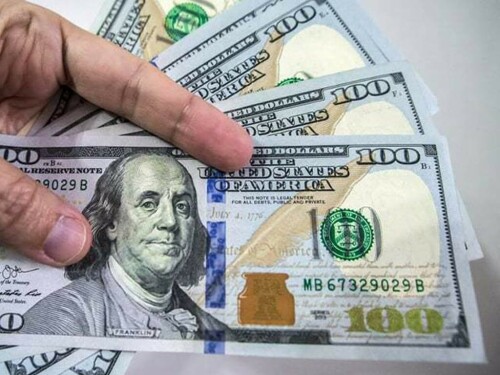Dollar Rebounds as Euro Weakens After ECB Rate Cut
NEW YORK: The U.S. dollar experienced a resurgence on Thursday, rebounding from its recent decline against other major currencies. This occurred as the euro faced headwinds following the European Central Bank’s (ECB) decision to lower interest rates for the seventh time in the past year.
The dollar has shown increased stability this week, maintaining a narrow trading range against the euro. This follows significant drops the previous week, which were triggered by concerns regarding the economic implications of tariffs and a shift in investor focus towards overseas investments.
“We’ve observed a notable period of strength for the majority of G10 currencies, and it appears we are currently in a phase of temporary consolidation,” commented Eric Theoret, FX strategist at Scotiabank. He added, “Our medium-term outlook remains bearish for the U.S. dollar, so we view this as a period of consolidation.”
Market participants are closely monitoring ongoing discussions between the U.S. and its trading partners, seeking indications of potential agreements that could clarify the Trump administration’s objectives.
President Trump highlighted “significant progress” in tariff negotiations with Japan on Wednesday. Additionally, he communicated via social media on Thursday that “Every Nation, including China, wants to meet!”
Italian Prime Minister Giorgia Meloni is scheduled to visit the White House on Thursday to address tariffs imposed on the European Union with President Trump. Furthermore, U.S. Treasury Secretary Scott Bessent has extended an invitation to South Korea’s finance minister for discussions in Washington next week.
The ECB’s decision to reduce interest rates to their lowest level since late 2022 is aimed at bolstering the struggling Eurozone economy, which is expected to be significantly impacted by U.S. tariffs.
“The tone is dovish. The emphasis has shifted towards assessing the downside risks to the growth forecast, rather than the upside risks to inflation,” explained Kirstine Kundby-Nielsen, FX analyst at Danske Bank.
Federal Reserve Chair Jerome Powell stated on Wednesday that the Fed would await further economic data before adjusting interest rates. He also cautioned that President Trump’s tariff policies posed a risk of pushing inflation and employment further away from the central bank’s objectives.
The euro declined by 0.35% to $1.1358, remaining below its recent three-year high of $1.1473 reached on Friday. The dollar rose by 0.3% against the Japanese yen, reaching 142.24. Earlier, it touched 141.60, its lowest point since September 18.
Trading volumes are anticipated to decrease ahead of Good Friday, when the majority of U.S. markets will be closed, although foreign exchange markets will remain open.
The dollar increased by 0.55% against the Swiss franc, reaching 0.817.
The New Zealand dollar, also known as the kiwi, rose by 0.51% to $0.5964 following the release of data indicating that New Zealand consumer prices increased faster than expected in the first quarter.
The Australian dollar gained 0.22% to $0.6383 after data revealed a rebound in Australian employment during March. The British pound was last up 0.07% at $1.3249.
In the cryptocurrency market, Bitcoin increased by 0.29% to $84,540.



Comments (0)
No comments yet. Be the first to comment!
Leave a Comment